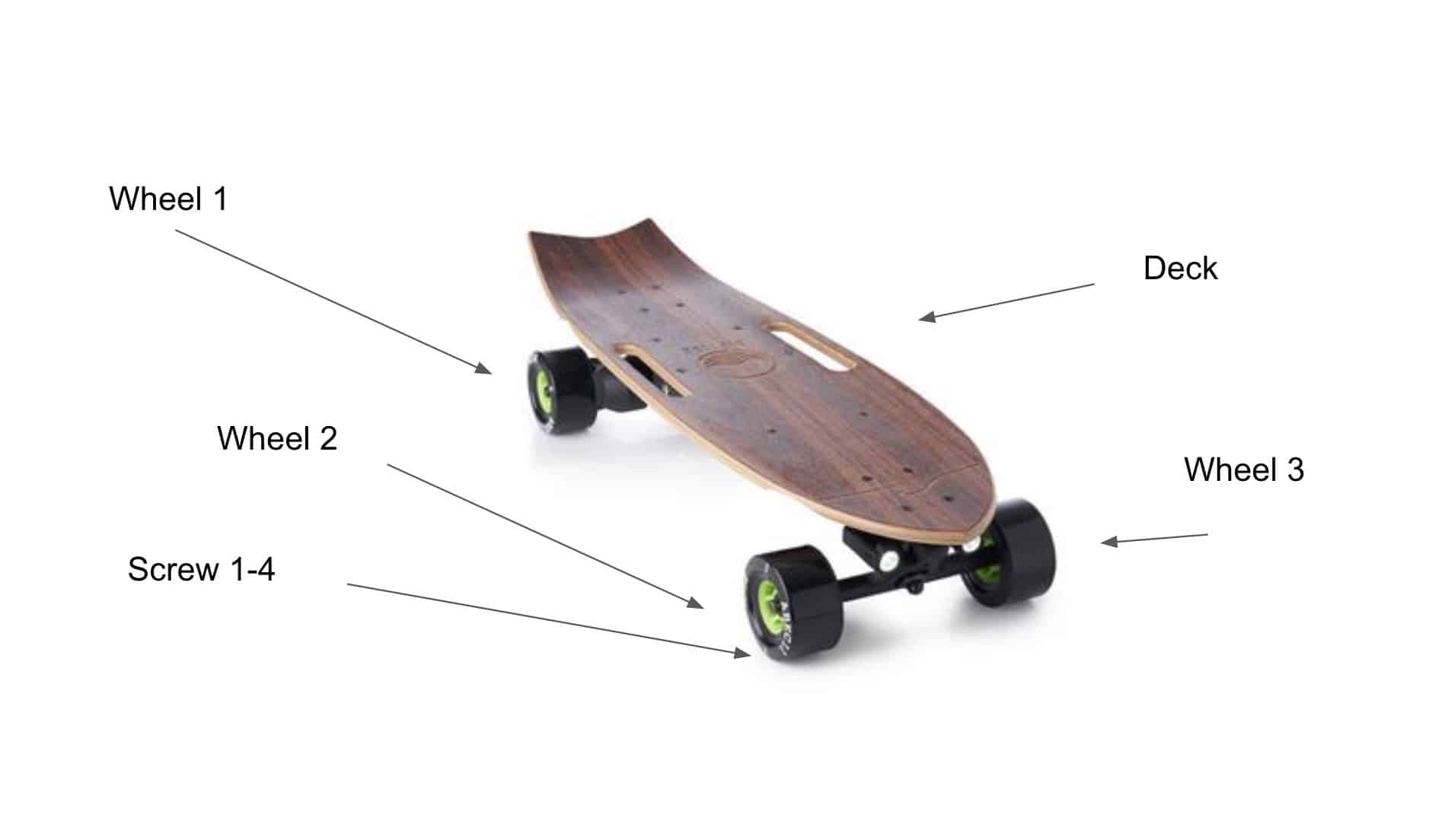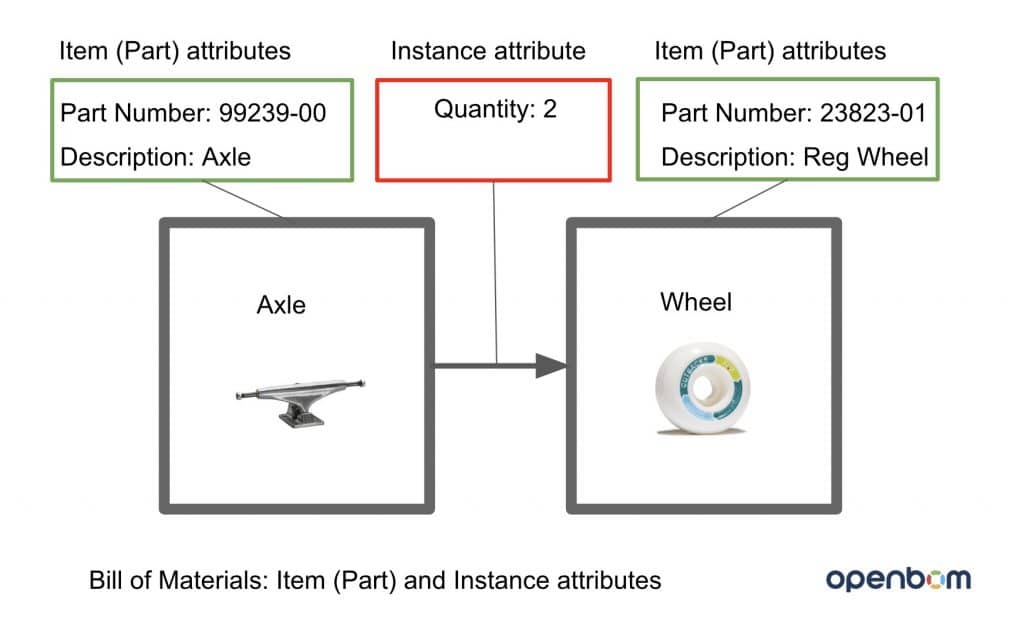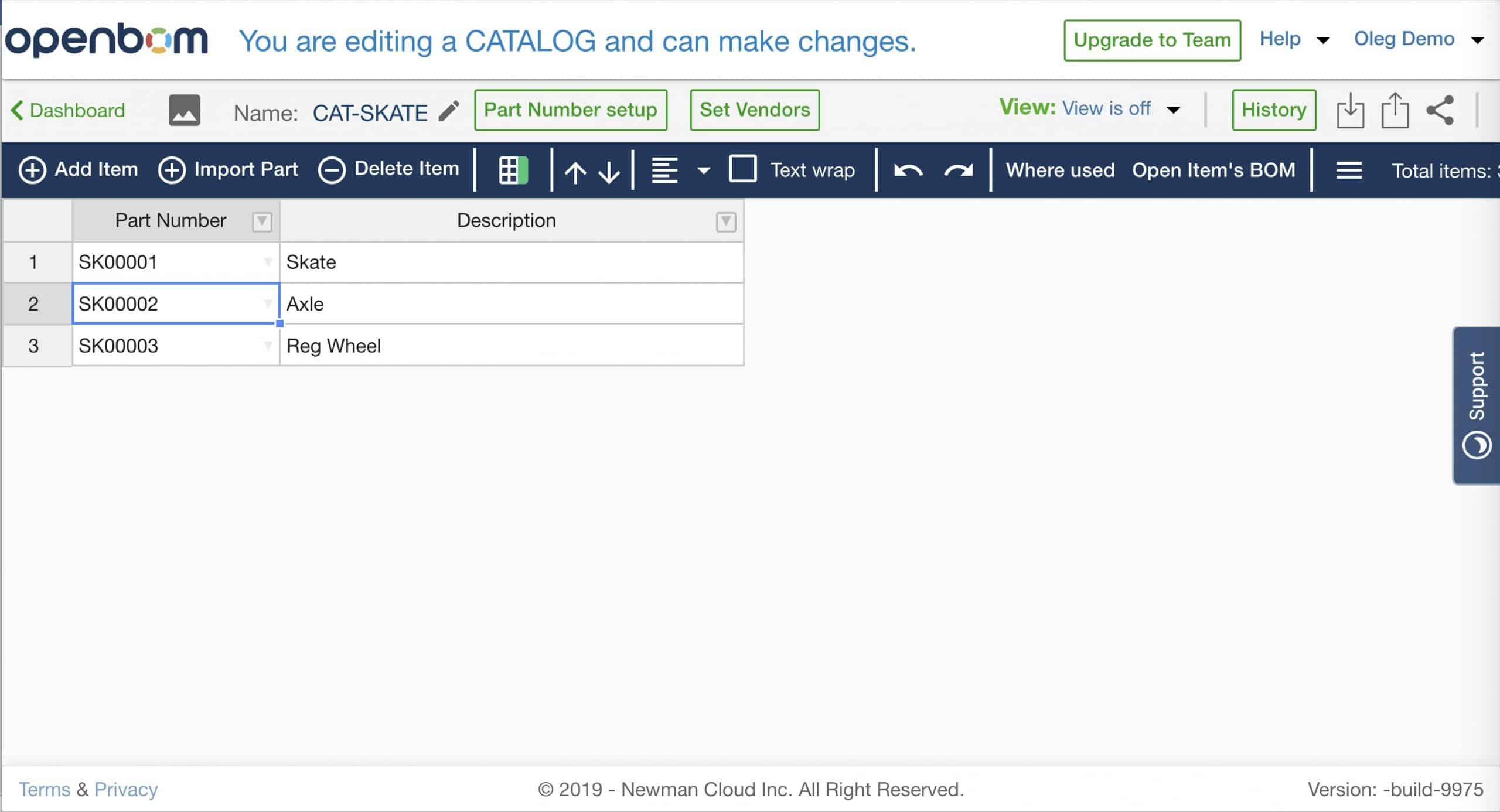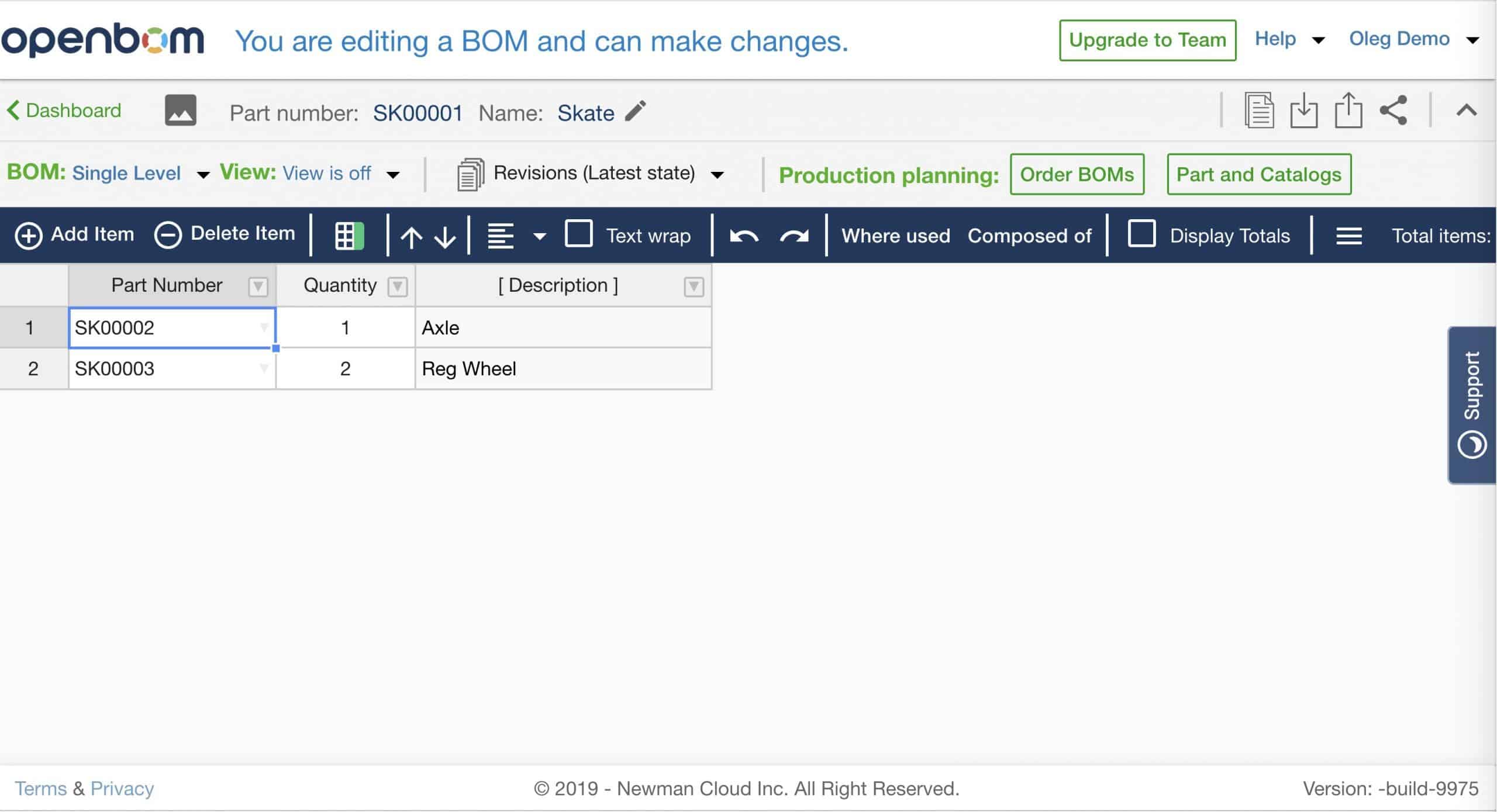
Bill of Materials aways sounds like a simple thing. You probably heard it before – BOM is a list of parts, what’s the big deal about it? Well… actually not really simple. You can start from a simple list, but you can find yourself deep in the complexity of data management very soon- parts, usages quantity, metadata, rollups, etc. This is only a very short list o things.
Today, I want to talk about some BOM management data modeling. If you’re using OpenBOM, you should know already about different BOMs OpenBOM can manage such as single-level BOM, multi-level BOM, and Flattened BOM. Check this article to refresh your memories.
Today I want to talk about instance information in the Bill of Materials. To give you an idea, here is the example of a fragment of skateboard BOM – Axle and Wheel.

As you can see from the picture above Axle and Wheel each has item information (eg. Part Number and Description). At the same time, Quantity is something different. In different BOMs, the same wheel can be included with a different quantity. So, Quantity is “instance” property and will be different in each BOM.
So, how OpenBOM manage Item and Instance properties? OpenBOM foundation is Reference-Instance mode. If you missed our articles about this topic, please check out here – OpenBOM Data Management Fundamentals.
The OpenBOM catalog holds information about items. In the example above catalog will have Part Number and Description. Quantity is instance property and it will be defined in the BOM.
Here are a few screenshots to explain it. The catalog contains all information about items (Parts and Assemblies)

BOM Is using Catalog and defines Quantity (instance property)

Conclusion.
OpenBOM flexible data model allows managing both item and instance information using the Reference-instance model. This model is absolutely flexible and allows you to define any item and any instance properties.
Best, Oleg @ openbom dot com.
Let’s get to know each other better. If you live in the Greater Boston area, I invite you for a coffee together (coffee is on me). If not nearby, let’s have a virtual coffee session — I will figure out how to send you a real coffee.
Want to learn more about PLM? Check out my Beyond PLM blog and PLM Book website
Join our newsletter to receive a weekly portion of news, articles, and tips about OpenBOM and our community.









